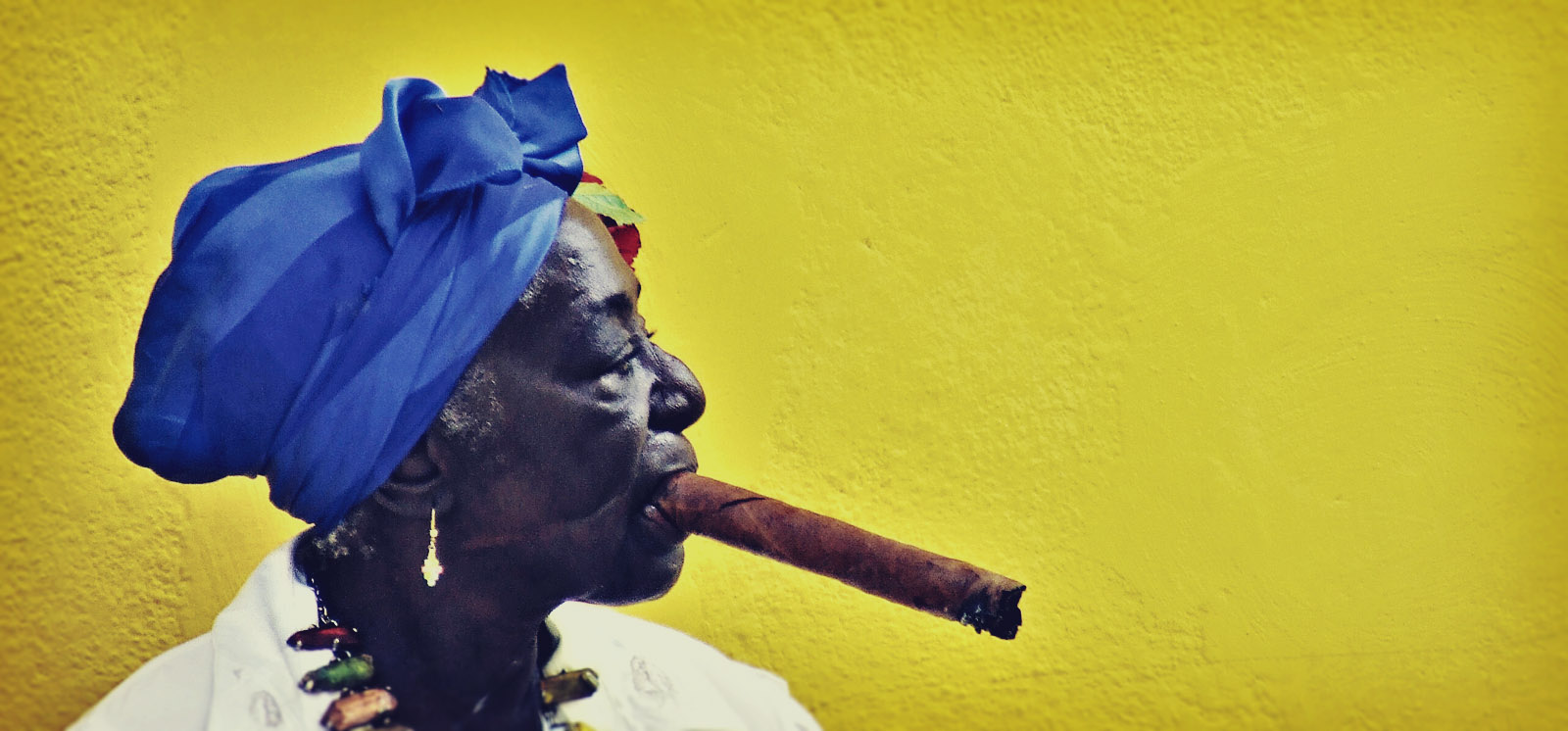Cuban Cigars and Tobacco Legal travel to Cuba
One of the finer things in Cuba is the Cuban cigar. The world famous Cuban cigar starts with the tobacco plant. Tobacco was grown commercially in Cuba after 1580 and by 1700 it was the largest export. Careful attention is required to cultivate a fine tobacco leaf used for only the finest cigar. The combination of the tropical climate, chemical composition and agricultural properties of the soil in Cuba’s tobacco growing region contribute to the product’s top quality.
Starting in October, the tobacco seeds are planted in a seed bed where they remain for 40 days until the seedlings are transplanted to the field. The plants are supervised and protected by nets and cloths until the leaves are ready to be picked. After 45 to 80 days the foot-long leaves are picked and taken to curing barns where they are hung and dried. This 6-8 week curing process is closely monitored to make sure the leaves do not become too dry or too moist. Once the all of the moisture is removed, the leaves are then piled on top of each other to ferment.
The piles gather heat which rids the tobacco of noxious chemicals like ammonia and develops the smooth, rich flavors and aromas that will be present in the finished cigar. The temperatures of the leaves are carefully monitored. The leaves are watered and shuffled to ensure that they are not damaged during handling and to make sure they ferment evenly.
The cured leaves are then packed in bales and shipped to the cigar factories of Havana. There are eight factories that hand make export quality cigars in Cuba today. The leaves that will be used as wrappers are separated and sprinkled with water to restore the humidity they lost during processing and reduce their fragility. Only the best tobacco leaves are selected for Cuban cigars, the rest are shredded for cigarettes. The leaves are sorted by skilled workers by size, color and strength. The filler tobacco is then blended, mixing the various grades of leaves, which then goes to the production room where the tabaquero or tabaquero (cigar roller) receives enough tobacco to roll about 100 cigars for the day. A cigar roller puts a chunk of filler tobacco in a binder leaf and puts it in a press to make it a solid cylinder. Then they select a high quality wrapper leaf which is then trimmed to size. The color of the leaves has little bearing on the strength of the tobacco, although the darker leaves are slightly sweeter and more full-bodied. The expertise and care expressed in the cigar factory determine how well a cigar burns and tastes.
Cuban Cigars and Tobacco Legal travel to Cuba
November 20, 2014
By admin
